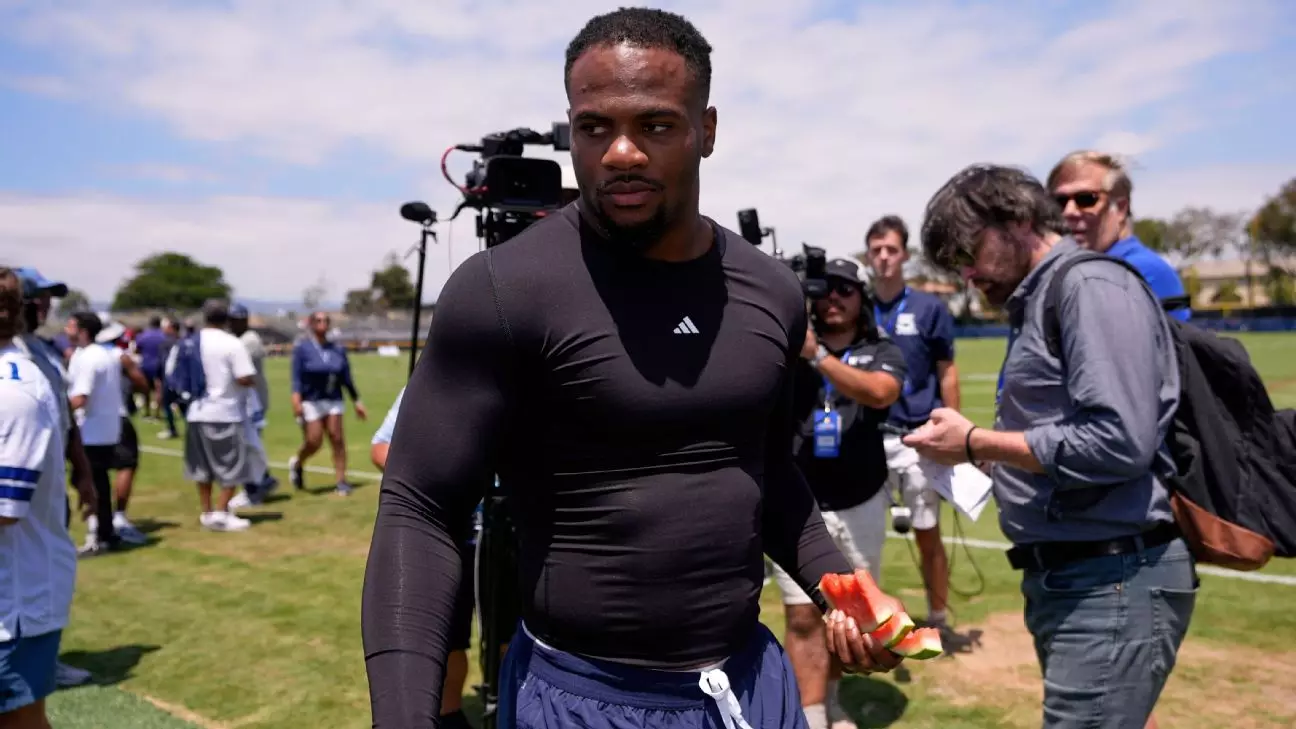The ongoing saga between the Dallas Cowboys and linebacker Micah Parsons exemplifies the complex web of negotiations, loyalty, and ego that shape NFL contracts today. Dallas Cowboys owner and GM Jerry Jones’s public declarations reveal a strategy rooted in asserting dominance and control amid intense competition for talent. By claiming that a deal he envisioned would have made Parsons the highest-paid non-quarterback in guaranteed money, Jones underscores the leverage he believes he holds. Yet, this narrative subtly exposes a broader issue: the power struggle inherent in superstar athlete negotiations, where ownership seeks to set precedents while players claw for their worth.
Jones’s unambiguous stance — emphasizing that no offer surpasses his own — is a typical negotiating tactic designed to project confidence and position himself as the primary decision-maker. But it also highlights an underlying insecurity: the fear of losing a franchise cornerstone to rival teams or to agents who challenge ownership’s authority. The statement about handling the “check” while Parsons’s agent, David Mulugheta, is dismissed as secondary suggests a perception that athletic talent alone should determine financial fairness, an oversimplification that glosses over the nuanced realities of professional sports contracts.
Furthermore, Jones’s willingness to frame the negotiations as a straightforward financial matter implies confidence that a deal can — or should — be achieved swiftly. Yet, the underlying tension indicates that, beneath that confidence, there’s a irreconcilable clash of interests. Jones appears willing to pay top dollar, but only if the terms align with his terms, and he is quick to criticize the agent rather than the player. This dynamic exposes how negotiations are often less about value and more about control, ego, and the strategic positioning of each party.
Negotiation Strategies and the Role of Trust
The public tone adopted by Jones reveals an interesting strategic use of transparency, which can be both a calculated move and a reflection of arena-specific negotiations. By openly claiming they had an agreement with Parsons, Jones projects a sense of moral and contractual authority, subtly pressuring Parsons and his representatives to accept a deal. The assertion that they agreed on contract length, guaranteed money, and total compensation seems designed to present the Cowboys as reasonable and committed to rewarding Parsons adequately.
Simultaneously, Jones’s criticism of Mulugheta underscores a belief that trustworthiness and cooperation are lacking from the agent’s side. His dismissive language — implying that the agent’s role is merely to execute paperwork after all negotiations are concluded — trivializes the importance of a professional agent’s role in representing player interests. This attitude brings into focus the fundamental question: Is the Cowboys’ approach to these negotiations rooted in a genuine desire for fairness, or are they primarily seeking to minimize their financial commitments and control the narrative?
Interestingly, Jones’s reference to past contracts, such as Dak Prescott’s, hints that he is using precedent as a negotiation baseline. His emphasis on handling contracts similarly suggests a comfort zone rooted in precedent rather than dynamic, player-centric negotiations. This approach, while effective at times, risks alienating star players who may feel undervalued or constrained by the team’s rigid stance.
The Implications of Future Contracting and Ownership Philosophy
By choosing to delay negotiations and potentially rely on franchise tags, Jones indicates a strategic preference for control over immediate financial commitments. His tone suggests a belief that, ultimately, bargaining power resides within the club’s framework rather than the player’s demands. The mention of “three years to work this thing out” highlights a pragmatic, if somewhat dismissive, outlook — that patience and strategic pressure will eventually lead Parsons to accept terms favorable to the Cowboys.
This approach also reveals a broader philosophy of team management: maintaining flexibility and leveraging existing contractual tools rather than rushing to meet player expectations. Jones’s comparison to Dak Prescott’s eventual contract, which involved playing on a franchise tag before reaching a long-term deal, underscores a willingness to delay gratification in favor of control. Such strategies can foster short-term stability but may foment long-term resentment or damage the trust between players and management.
What is perhaps most revealing is Jones’s capacity to rationalize these tactics as standard practice, even as they are inherently contentious. His confidence speaks to a belief that patience and strategic toughness will win out, but history shows that such an approach can sometimes backfire, leading to fractured relationships and reputational damage. In the high-stakes world of NFL contracts, where loyalty and team cohesion are paramount, this delicate balance can determine a franchise’s future success or failure.

